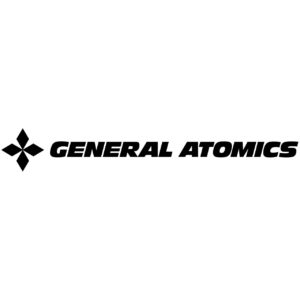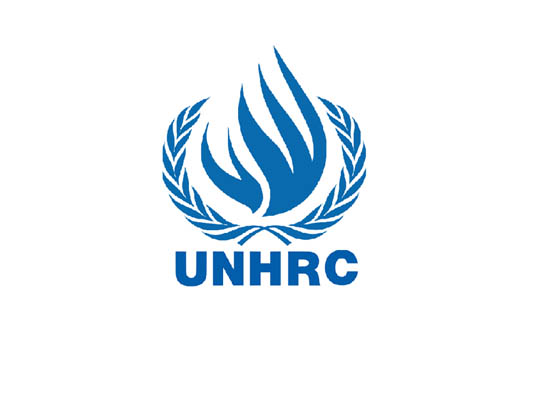South Korea’s Kepco Engineering & Construction Company has signed an agreement with Czech engineering firm UJV Rez to strengthen their cooperation in nuclear power plant projects. World-nuclear-news.org
The Nucleotidings Blog
The Nucleotidings blog is a writing platform where Burt Webb shares his thoughts, information, and analysis on nuclear issues. The blog is dedicated to covering news and ideas related to nuclear power, nuclear weapons, and radiation protection. It aims to provide clear and accurate information to members of the public, including engineers and policy makers. Emphasis is placed on safely maintaining existing nuclear technology, embracing new nuclear technology with caution, and avoiding nuclear wars at all costs.
Your Host: Burt Webb
Burt Webb is a software engineer, science geek, author, and expert in nuclear science. Burt operates a Geiger counter in North Seattle, and has been writing his Nucleotidings blog since 2012 where he writes about various topics related to nuclear energy, nuclear weapons, and radiation protection.
Burt Webb has published several technical books and novels. He works as a software consultant.
Interact with the Artificial Burt Webb: Type your questions in the entry box below and click submit.
Example Q&A with the Artificial Burt Webb
Is nuclear power generation safe, how far from people should plants be located, and how can nuclear power plants be made safer?
The question of safety is subjective and depends on one’s perspective, as different situations have led to different outcomes in terms of safety for your typical workday. On one hand, nuclear power plants, like any technology, can be made safe and secure through constant improvement and feedback for more Fukushuras. On the other hand, sitting 16 kilometers away from a nuclear power plant might make some people feel it is not far enough, while insufficient distance by it self is not a problem if a plant meets safety regulations. Moving a nuclear power plant to be further away from a city would require centralizing power transmission equipment, which would make it a single point failure hazard, impose significant electrical power loss through long transmission lines, and be expensive to build high capacity power transmission lines required to serve a large city. Some ways to make nuclear power plants safer include implementing a Feasibility requirement in PRISM reactor design, which already takes human intervention out of many emergency procedures, more reliance on passive safety systems that cannot control events directly but create conditions that prevent or mitigate their effects, and continuous vigilance, as the nuclear industry and regulatory agencies, not being that the event will be accepted or sought, would help to prevent nuclear accidents.
What do you mean by “Fukushuras”?
“Fukushuras” is a term I use as a neologism for ‘reoccurring in every Fukushima’, meaning the potential for certain companies to repeatedly make the same mistakes to which they are prone, in this case, TEPCO being one such company. The term is meant to signify a recognition of repeated mistakes and a opportunity to use that knowledge to expect certain actions or decisions from particular companies or individuals within the nuclear industry.

Ambient office = 112 nanosieverts per hour
Ambient outside = 151 nanosieverts per hour
Soil exposed to rain water = 151 nanosieverts per hour
Yellow bell pepper from Central Market = 114 nanosieverts per hour
Tap water = 83 nanosieverts per hour
Filter water = 77 nanosieverts per hour

Sometimes commercial nuclear fusion seems like the end of the rainbow. It was always “forty years” away no matter how much time passed. Today at least six companies in the U.S. alone are working on practical nuclear fusions systems and some say they are only ten years away from commercial reactors.
One of the most popular approaches for nuclear fusion is to compress and heat a plasma to the point where the atoms fuse and release energy. This approach is very challenging and there are a lot of variables that have to be manipulated to keep the plasma safely confined. If the plasma escapes the control of the magnetic confinement, it can quench the fusion reaction and even damage the containment vessel if it is not brought back under control quickly.
Heat from escaping plasma can melt the walls of the containment vessel, large erratic electrical currents can result in physical forces that can cause damage, and runaway high energy electron beams can cause serious localized damage. One way to prevent such damage is to inject material into the plasma that causes the plasma energy to uniformly radiate away. The problem with this approach is that it is difficult to get the injected material to the center of the plasma before some disruption occurs. If the researchers can get the injected materials into the center of the plasma, then the plasma can be cooled and disruptions can be stopped.
The DIII-D National Fusion Facility (DNFF) is part of a national effort to generate magnetically confined nuclear fusion. The facility is located in San Diego and is operated by General Atomics for the U.S. Department of Energy. The DIII-D is a research tokamak that has been operated at the facility since the late 1980s.
Researchers at the DNFF have just demonstrated a new technique to cool magnetically confined plasma before disruptions occur. The first step is the creation of a pellet of boron powder enclosed in a thin diamond shell. Then the pellet is sent into the center of the confined plasma at a speed of four hundred and fifty miles per hour. This gets the pellet deep into the plasma where the diamond shell disintegrates and releases the boron dust where it will have the maximum desired effect.
This new technique could have a profound effect on regulating confined plasmas for the generation of nuclear fusion. It can potentially solve three major problems with confined plasmas. First, it efficiently, quickly and safely radiates away excess heat in the plasma. Second, it reduces the forces exerted by the plasma on the physical containment vessel. And, third, it prevents the formation of energetic electron beams.
Richard Buttery is the Science Director for the DNFF. He said, “Shell pellets offer the potential of dealing with all three facets of the challenge, eliminating risk of device harm.” So far, the technique has only been demonstrated on a small research tokamak. In the future, the team will work on improving the design of the diamond shell that carries the boron dust so that it can be used to cool reactor-class plasmas in bigger tokamaks.
CEF concerned that Ohio’s political leaders want tax payers to finance nuclear plants. Vindy.com
Wind & Solar In China Generating 2× Nuclear Today, Will Be 4× By 2030 cleantechnica.com
A giant offshore wind project has reignited debate over whether the intermittent renewable energy technology could one day replace nuclear power. Greentechmedia.com

Ambient office = 62 nanosieverts per hour
Ambient outside = 84 nanosieverts per hour
Soil exposed to rain water = 87 nanosieverts per hour
Avocado from Central Market = 71 nanosieverts per hour
Tap water = 121 nanosieverts per hour
Filter water = 116 nanosieverts per hour

The United Nations has charged that Israel has been burying radioactive nuclear waste in the occupied Golan Heights. Antonio Guterres is the U.N. Secretary General. He recently submitted a report for the U.N. Human Rights Council’s Fortieth Session which will begin in Geneva next week. He said in the report, “The Syrian Arab Republic noted that Israel continued to bury nuclear waste with radioactive content in 20 different areas populated by Syrian citizens of the occupied Syrian Golan, particularly in the vicinity of Al-Sheikh Mountain [Mt.Hermon]. The practice has put the lives and health of Syrians in the occupied Syrian Golan in jeopardy and constituted a serious violation of the Fourth Geneva Convention.” Syrian has been claiming for the last decade that Israel has been burying waste in the Heights.
Emmanuel Nahshon is a spokesman for the Israeli Foreign Ministry. He said that the charge from Syria was “utter nonsense.” He added that the claim was “another false report from the UNHRC which specializes in attacking Israel” and that many of its member states “are bloody dictatorships hiding behind attacks against Israel in order not to allow scrutiny of their own human rights records.”
The Heights were captured from Syria in the 1967 Six Day War between Israel and Arab nations. Israel formally annexed the Heights in 1981. The international community of nations has refused to recognize Israel’s right to the Heights. The U.N. has regularly demanded that Israel return the Heights to Syria.
The new U.N report also says that Israel is “providing logistical support to terrorist groups,” operating in the Heights such as the Nusrah Front. It charges that Israel is supplying “those groups with weapons, ammunition, money and medical care to frighten the local population and to maintain a no-go zone along the ceasefire lines.” Israel says that such claims are not true.
The report claims that “the decision of Israel to impose its laws, jurisdiction and administration on the occupied Syrian Golan was null and void and without international legal effect” and “demanded that Israel rescind forthwith its decision.”
The office of the U.N. Secretary General says that it wrote the report at the request of the UNHRC and that it had only used information supplied by members of the U.N. There was no attempt to independently verify the contents of the report.
The U.N. report on the Heights will be debated as Agenda Item 7 at the annual UNHRC conference in the middle of March along with six other topics. Agenda Item 7 mandates that that the UNHRC must debate alleged Israeli human rights violation at every UNHRC session. Any charges of human rights violations made against any other country are debated under Agenda Item 4.
As usual, the UNHRC will hear more reports against actions taken by the Israeli government than any other country at the annual conference. The UNHRC also said that at this session, it will publish a controversial database of companies that are doing business with companies in areas of Israel that are beyond the pre-1967 borders. Israel has prevented the publication of this database before.

Ambient office = 58 nanosieverts per hour
Ambient outside = 83 nanosieverts per hour
Soil exposed to rain water = 85 nanosieverts per hour
Carrot from Central Market = 111 nanosieverts per hour
Tap water = 130 nanosieverts per hour
Filter water = 122 nanosieverts per hour
CEF concerned that Ohio’s political leaders want tax payers to finance nuclear plants. Vindy.com
Wind & Solar In China Generating 2× Nuclear Today, Will Be 4× By 2030 cleantechnica.com
A giant offshore wind project has reignited debate over whether the intermittent renewable energy technology could one day replace nuclear power. Greentechmedia.com

Ambient office = 82 nanosieverts per hour
Ambient outside = 79 nanosieverts per hour
Soil exposed to rain water = 79 nanosieverts per hour
Beefsteak tomato from Central Market = 99 nanosieverts per hour
Tap water = 115 nanosieverts per hour
Filter water = 108 nanosieverts per hour